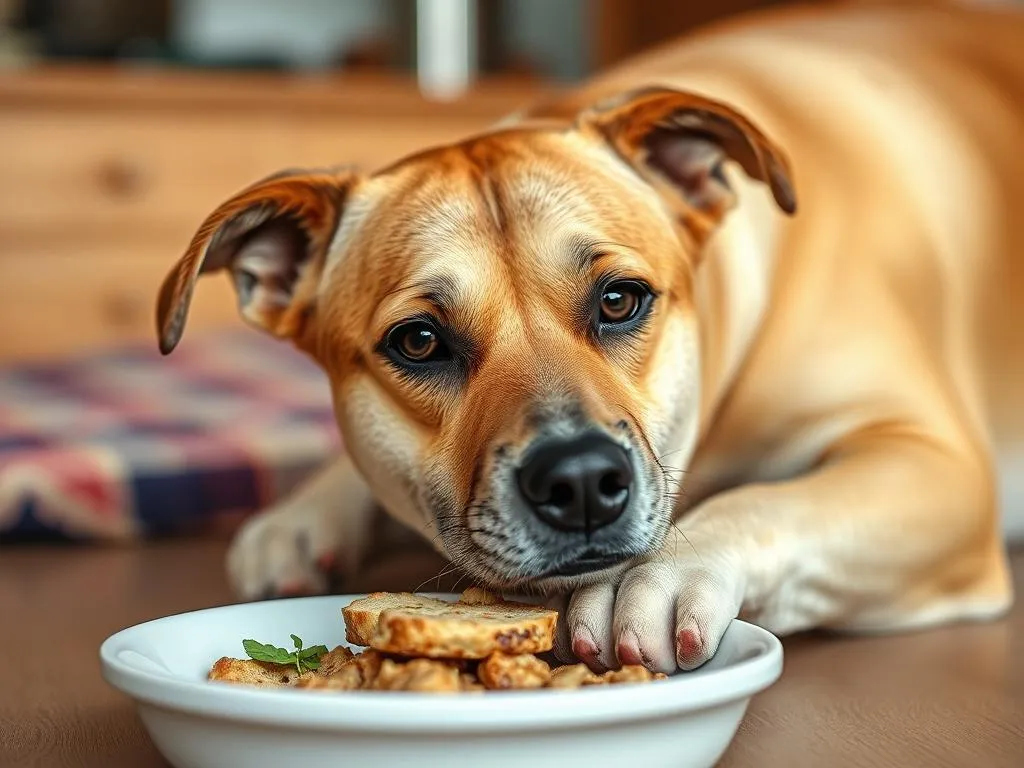
Introduction
Overview of Dog Nutrition
Proper nutrition is essential for the health and well-being of our canine companions. A balanced diet not only supports their physical growth and development but also plays a critical role in their energy levels, immune function, and overall quality of life. Dogs, like humans, have specific nutritional needs that vary based on their age, breed, size, and activity level. Common nutritional requirements for dogs include proteins, carbohydrates, fats, vitamins, and minerals.
Understanding Appetite Changes
It can be concerning for dog owners when their furry friends suddenly refuse to eat. Understanding the reasons behind appetite changes is crucial in maintaining your dog’s health. Various factors can lead to changes in appetite, including health issues, behavioral factors, and environmental influences. Addressing the issue promptly is vital to prevent potential health complications that could arise from prolonged periods of not eating.
Common Reasons Why Dogs Won’t Eat
Health Issues
Dental Problems
One of the most common health-related reasons dogs may refuse food is dental pain. Symptoms of dental issues can include bad breath, difficulty chewing, and visible tartar buildup. When a dog experiences dental discomfort, they may shy away from food, especially hard kibble. Regular dental check-ups and cleanings can help prevent these issues and ensure your dog remains comfortable while eating.
Gastrointestinal Issues
Gastrointestinal problems can also lead to a loss of appetite. Conditions such as nausea, diarrhea, or intestinal parasites can make it uncomfortable for your dog to eat. If your dog exhibits signs of gastrointestinal distress, such as vomiting or a bloated stomach, it’s crucial to consult your veterinarian for a proper diagnosis and treatment.
Chronic Health Conditions
Chronic health conditions like diabetes, kidney disease, or cancer can significantly impact a dog’s appetite. These conditions often require immediate veterinary attention, as they can lead to severe health complications if left untreated. If you notice a sustained decrease in your dog’s appetite alongside other symptoms, seeking veterinary advice is essential.
Behavioral Factors
Stress and Anxiety
Changes in environment, routine, or even the addition of a new family member can induce stress and anxiety in dogs. Just like humans, dogs can experience emotional distress, which may manifest as a refusal to eat. Creating a stable and calm environment can help alleviate these feelings and encourage your dog to eat.
Picky Eating Habits
Some dogs develop picky eating habits, often influenced by previous experiences with food. If a dog has been offered a variety of foods or has had negative experiences associated with certain meals, they may become finicky. Understanding your dog’s food preferences and what they enjoy can help in curating a more appealing diet.
Food Preferences
Dogs can be surprisingly selective about flavors and textures. Some may prefer wet food over dry kibble, while others might shy away from certain ingredients. Experimenting with different brands or types of food can help identify what your dog enjoys most.
Environmental Factors
Temperature and Weather
Extreme temperatures can affect a dog’s appetite. Hot weather, in particular, may lead to reduced interest in food, as dogs may feel lethargic or uncomfortable. During these times, ensuring your dog has access to fresh water and a cool, shaded area can help them stay hydrated and comfortable.
Feeding Routine and Timing
Establishing a consistent feeding schedule is essential for a dog’s overall well-being. Dogs thrive on routine, and irregular feeding times can lead to confusion and reduced appetite. Keeping mealtimes consistent can help instill a sense of security and predictability for your dog.
When to Be Concerned
Signs of Serious Health Issues
Duration of Appetite Loss
It’s important to monitor how long your dog has been refusing food. If your dog hasn’t eaten for more than 24 hours, it’s advisable to consult your veterinarian. Prolonged appetite loss can lead to significant health risks, including malnutrition and dehydration.
Accompanying Symptoms
In addition to appetite loss, certain symptoms can indicate a need for urgent medical attention. Signs such as vomiting, lethargy, diarrhea, or noticeable weight loss should not be ignored. These symptoms could signify a serious underlying health issue that requires immediate veterinary care.
Importance of Veterinary Consultation
When to Schedule a Visit
If your dog’s appetite loss persists beyond a day or two, or if you notice any concerning symptoms, it’s time to schedule a visit with your veterinarian. They can provide a thorough examination and determine if further testing is needed.
What to Expect at the Vet
During a veterinary consultation, you can expect a comprehensive examination of your dog. The veterinarian may perform blood tests, X-rays, or ultrasounds to diagnose any underlying health issues. Being prepared with a detailed account of your dog’s eating habits and any other symptoms can aid in the diagnostic process.
Strategies to Encourage Eating
Adjusting Diet
Trying New Foods
One of the first steps you can take when your dog refuses to eat is to try different brands or flavors of food. Sometimes, a simple switch to a more appealing option can reignite your dog’s interest in mealtime. Consider high-quality dog foods that offer a variety of flavors and textures.
Mixing in Toppers
Adding enticing food toppers can also encourage your dog to eat. Toppers can include canned food, bone broth, or even a small amount of cooked meat. These additions can enhance the flavor and make meals more appealing to your dog.
Improving Meal Environment
Creating a Calm Feeding Space
The environment in which your dog eats can greatly affect their willingness to eat. Creating a calm feeding space free from distractions can help your dog feel more comfortable. Consider using a quiet area of your home for feeding and avoiding loud noises or interruptions during mealtime.
Establishing a Feeding Routine
Consistency is key when it comes to feeding your dog. Establishing a regular feeding routine can help your dog recognize mealtimes and anticipate when food will be available. This predictability can help reduce anxiety and encourage a healthy appetite.
Behavioral Techniques
Positive Reinforcement
Using positive reinforcement can be an effective way to encourage your dog to eat. Offering praise or treats when your dog approaches their food bowl can create a positive association with mealtime. Over time, your dog may become more eager to eat.
Gradual Food Changes
If you plan to change your dog’s diet, do so gradually to minimize stress. Sudden changes can lead to digestive upset and further deter your dog from eating. Mix a small amount of the new food with the old for several days, gradually increasing the new food’s proportion until your dog is fully transitioned.
Long-term Solutions for Picky Eaters
Understanding Nutritional Needs
Consulting with a Veterinarian or Nutritionist
For dogs that consistently refuse to eat or display picky eating habits, consulting with a veterinarian or a pet nutritionist can be invaluable. They can provide tailored dietary recommendations based on your dog’s specific needs, ensuring they receive adequate nutrition.
Homemade Dog Food Options
Benefits of Home-Cooked Meals
Home-cooked meals can offer numerous benefits, including control over ingredients and the ability to cater to your dog’s specific preferences and dietary needs. Many owners find that their dogs are more enthusiastic about eating when meals are prepared at home.
Recipes and Guidelines
If you decide to prepare homemade dog food, it’s important to ensure it is balanced and nutritious. Simple recipes might include a mix of lean proteins (like chicken or fish), vegetables (such as carrots or peas), and healthy carbohydrates (like brown rice or sweet potatoes). Always consult your veterinarian for specific dietary guidelines and recommendations.
Conclusion
Recap of Key Points
In summary, understanding why your dog may not be eating is essential for maintaining their health and well-being. From health issues to behavioral factors and environmental influences, there are various reasons your dog may refuse food. It’s crucial to monitor their eating habits and seek veterinary advice when necessary.
Encouragement for Dog Owners
As a dog owner, it’s important to remain patient and attentive to your pet’s needs. Addressing appetite loss can take time and may require a combination of strategies. By staying proactive and involved in your dog’s nutrition, you can help ensure they remain happy and healthy.
By monitoring your dog’s eating habits and consulting with professionals when needed, you can effectively tackle the issue of a dog that won’t eat, ensuring they receive the nutrition they need for a long, healthy life.









